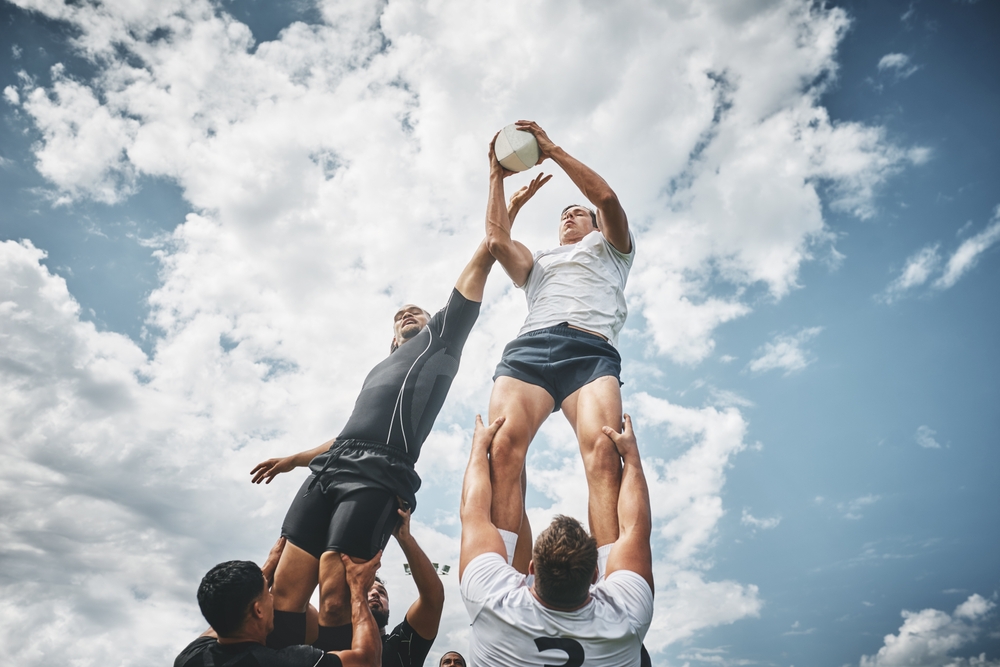Korfball: The Inclusive Sport Bridging Gender Gaps
In a world where gender equity in sports remains a challenge, korfball stands out as a beacon of inclusivity. This unique Dutch-origin sport, blending elements of basketball and netball, mandates mixed-gender teams and promotes equal participation. Despite its century-long history, korfball remains relatively unknown outside its strongholds, yet its principles of fairness and cooperation offer valuable lessons for the broader sporting world.

Unlike traditional sports of the era, korfball was designed with gender equality at its core. Teams consist of eight players, four men and four women, with strict rules ensuring that players can only defend against opponents of the same sex. This unique structure promotes a level playing field, where success depends on the collective efforts of all team members, regardless of gender.
Rules and Gameplay: A Blend of Strategy and Cooperation
Korfball is played on a rectangular court divided into two zones. Each team has two men and two women in each zone, with players restricted to their designated areas. The objective is to score by shooting a ball through a basket (korf) mounted on a 3.5-meter-high pole at each end of the court.
What sets korfball apart is its emphasis on teamwork and spatial awareness. Players are not allowed to dribble, run with the ball, or shoot when defended, necessitating quick passes and strategic positioning. The “defended” rule, where a player cannot shoot if an opponent of the same sex is actively guarding them, further encourages cooperation and clever off-ball movement.
Global Spread and Competition
While korfball remains most popular in the Netherlands, its unique appeal has led to its spread across Europe, Asia, and beyond. The International Korfball Federation (IKF), founded in 1933, now boasts over 60 member countries. World Championships have been held since 1978, with European powerhouses like the Netherlands and Belgium dominating the international scene.
Despite its growth, korfball faces challenges in gaining wider recognition. The sport’s mixed-gender nature, while progressive, has sometimes hindered its inclusion in major multi-sport events. However, korfball’s advocates argue that its inclusive philosophy aligns perfectly with modern values of gender equality and could serve as a model for other sports.
Benefits Beyond the Court
Korfball’s unique structure offers benefits that extend beyond mere gameplay. Research has shown that mixed-gender sports can foster better understanding and respect between sexes, breaking down stereotypes and promoting equality from a young age. In korfball, boys and girls learn to rely on each other’s strengths, developing teamwork skills that translate well to other areas of life.
Moreover, the sport’s non-contact nature and emphasis on skill over physical dominance make it accessible to a wide range of body types and abilities. This inclusivity can boost participation rates, particularly among individuals who might feel excluded from more traditional sports.
Challenges and Future Prospects
Despite its merits, korfball faces several hurdles in its quest for wider recognition. The sport’s complexity can be a barrier to casual viewers, and its mixed-gender format challenges traditional sports marketing approaches. Additionally, the dominance of a few countries in international competitions has limited global competitive interest.
However, korfball’s proponents see these challenges as opportunities. Efforts are underway to simplify rules for newcomers and develop grassroots programs in emerging korfball nations. The sport’s unique selling points – gender equality, teamwork, and inclusivity – align well with contemporary social values, offering potential for growth in an evolving sports landscape.
Korfball in Education: A Tool for Social Development
Educational institutions are increasingly recognizing korfball’s potential as a tool for social development. The sport’s inherent focus on cooperation and gender equality makes it an excellent vehicle for teaching important life skills. In schools that have adopted korfball programs, educators report improved communication between boys and girls, enhanced teamwork abilities, and a more inclusive athletic environment.
Studies have shown that participation in mixed-gender sports like korfball can help reduce gender stereotypes and promote more egalitarian attitudes among young people. By working together towards a common goal, students learn to value each other’s contributions regardless of gender, a lesson that extends far beyond the sports field.
Technological Innovations in Korfball
While korfball’s basic rules have remained largely unchanged since its inception, the sport has not been immune to technological advancements. Modern korfball equipment, from specially designed balls to adjustable korfs, has enhanced the playing experience. Video analysis tools have become crucial for team strategy and player development, allowing coaches to break down gameplay and identify areas for improvement.
In recent years, there’s been growing interest in using virtual reality (VR) technology to enhance korfball training. VR simulations can help players improve their spatial awareness and decision-making skills, crucial aspects of the sport. These technological innovations not only improve the quality of play but also make the sport more appealing to tech-savvy younger generations.
Korfball and Cultural Exchange
As korfball spreads globally, it’s becoming a vehicle for cultural exchange. International tournaments bring together players from diverse backgrounds, fostering understanding and friendship across borders. The sport’s emphasis on fairness and cooperation resonates with various cultural values, making it adaptable to different social contexts.
In some countries, korfball has been used as a tool for social integration, bringing together communities that might otherwise remain separate. The sport’s inclusive nature makes it particularly effective in bridging cultural divides, as players learn to work together regardless of their backgrounds.
The Economic Aspect of Korfball
While not as commercially developed as many mainstream sports, korfball has its own economic ecosystem. Equipment manufacturers, training facilities, and professional leagues, particularly in countries like the Netherlands and Belgium, contribute to local economies. As the sport grows, there’s potential for increased economic impact through tourism related to international tournaments and the development of professional leagues in new markets.
However, the challenge lies in balancing commercial growth with the sport’s core values of inclusivity and fairness. Korfball’s stakeholders are keen to avoid the pitfalls of over-commercialization seen in some other sports, striving to maintain the sport’s unique character while expanding its reach.
Korfball and Health Benefits
The health benefits of korfball are numerous and well-documented. As a high-intensity, intermittent sport, it provides excellent cardiovascular exercise. The varied movements required – running, jumping, throwing – contribute to overall physical fitness and motor skill development. The sport’s non-contact nature also means a lower risk of serious injuries compared to many other team sports.
Beyond physical health, korfball offers significant mental health benefits. The team-based nature of the sport fosters social connections, while the strategic elements engage cognitive skills. The inclusive environment can boost self-esteem and confidence, particularly for individuals who might feel marginalized in other sporting contexts.
Adapting Korfball for Different Age Groups and Abilities
One of korfball’s strengths is its adaptability. Modified versions of the game have been developed for different age groups and ability levels. For young children, “monokorfball” uses a single korf, simplifying the game while maintaining its core principles. For older adults or those with mobility issues, “walking korfball” slows the pace of the game, allowing for continued participation.
These adaptations ensure that korfball can be a lifelong sport, promoting physical activity and social engagement across all age groups. They also make the sport more accessible to people with disabilities, aligning with broader efforts to make sports more inclusive.
The Role of Coaching in Korfball
Coaching in korfball presents unique challenges and opportunities. Coaches must navigate the complexities of mixed-gender teams, balancing the strengths and weaknesses of all players. This requires a deep understanding of both the technical aspects of the game and the interpersonal dynamics at play.
Effective korfball coaching goes beyond tactical knowledge. Coaches play a crucial role in fostering a cooperative team environment, ensuring equal participation, and developing players’ decision-making skills. The best korfball coaches are often praised not just for their strategic acumen, but for their ability to create cohesive, respectful teams that embody the sport’s inclusive philosophy.
Korfball in the Media Landscape
Despite its unique attributes, korfball has struggled to gain significant media attention outside its stronghold countries. This limited exposure presents both a challenge and an opportunity. On one hand, the lack of mainstream coverage makes it difficult to attract new players and fans. On the other, it allows the sport to control its narrative and image more carefully.
Social media and online streaming platforms have opened new avenues for korfball promotion. Many national federations and clubs use these platforms to share highlights, tutorials, and behind-the-scenes content, gradually building a global community of korfball enthusiasts. As digital media continues to evolve, there’s potential for korfball to find innovative ways to increase its visibility and appeal to new audiences.
The Environmental Impact of Korfball
In an era of increasing environmental consciousness, korfball stands out for its relatively low environmental impact. The sport requires minimal equipment and can be played in a variety of settings, from purpose-built indoor courts to adapted outdoor spaces. This flexibility reduces the need for extensive infrastructure development and the associated environmental costs.
Furthermore, the local nature of most korfball competitions means less travel compared to many other sports, reducing the carbon footprint associated with tournaments. As the sport grows, there’s an opportunity to position korfball as an environmentally friendly option, appealing to eco-conscious athletes and spectators.
Korfball and Gender Studies
Korfball’s unique mixed-gender format makes it a fascinating subject for gender studies researchers. The sport provides a real-world laboratory for examining how men and women interact in a competitive yet cooperative environment. Studies have explored how korfball challenges traditional gender roles in sports and its potential impact on broader social attitudes towards gender equality.
Some researchers argue that korfball’s structure, where men and women are equally vital to a team’s success, could serve as a model for promoting gender equality in other areas of society. However, others caution against oversimplifying the sport’s impact, noting that societal gender norms can still influence player interactions and perceptions within the game.
The Future of Korfball: Challenges and Opportunities
As korfball looks to the future, it faces both challenges and opportunities. The sport’s greatest strength – its unique, inclusive nature – is also its biggest hurdle in gaining mainstream acceptance. In a sports world often divided along gender lines, korfball’s mixed-gender format can be seen as unconventional.
However, as society increasingly values gender equality and inclusivity, korfball is well-positioned to align with these shifting attitudes. The challenge lies in effectively communicating the sport’s benefits and excitement to a broader audience. Efforts to simplify rules for newcomers, increase media coverage, and develop star players could help korfball break through to the mainstream.
The potential for Olympic inclusion remains a long-term goal for many in the korfball community. While this would bring unprecedented exposure, it also raises questions about maintaining the sport’s core values in the face of increased commercialization and competition.
Conclusion: Korfball’s Potential to Transform Sports Culture
Korfball, with its century-long history of promoting gender equality and cooperation, offers more than just an alternative to traditional sports. It presents a vision of what sports can be – inclusive, fair, and focused on collective achievement rather than individual dominance.
As the world grapples with issues of gender equality, social inclusion, and the role of sports in society, korfball’s principles seem more relevant than ever. While it may never achieve the global popularity of sports like football or basketball, korfball’s influence could extend far beyond its player base.
By challenging norms and demonstrating the viability of mixed-gender competition, korfball paves the way for broader changes in sports culture. It shows that cooperation between genders is not just possible in sports, but can enhance the experience for all involved. As such, korfball’s greatest legacy may be in inspiring other sports to become more inclusive and in promoting a more egalitarian approach to athletics at all levels.
In a world that increasingly values diversity and inclusion, korfball stands as a testament to the power of sports to bring people together, break down barriers, and foster mutual respect. Whether as a competitive sport, an educational tool, or a model for social change, korfball’s unique approach offers valuable lessons for the future of sports and society as a whole.





